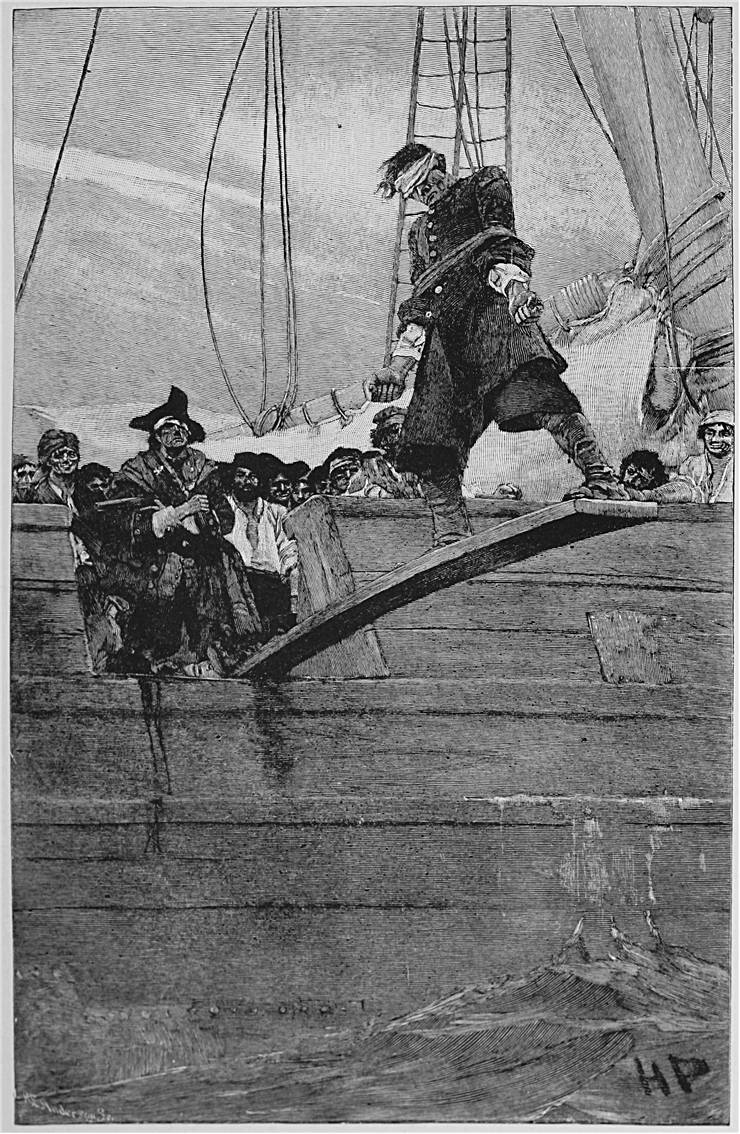Walking the Plank - Meaning and Origin
Walking the plank is a popular term that was born after several reports of very elaborate and unusual form of sadistic torture technique on sea ships reached the mainland. It involved an extension of a single wooden plank far beyond the edge of the ship, and then forcing of a prisoner to walk it until its end where the vibrations of the plan will force the person to lose its balance and drop into the sea. While the modern popular culture thinks of the popular pirate tales whenever someone mentions the term “walking the plank”, in reality, Golden Age of Piracy has not a single record of this event ever happening. Popular pirates such as Henry Avery, Blackbeard, Henry Morgan and all others never used this technique for torturing and killing their prisoners. In fact, the vast majority of pirates prefer not to kill their victims, and they went out of their way to ensure that victims they left behind had at least some chance of surviving (leaving them on sacked ships, marooning them on the shore, etc.).
The first recorded an instance of anyone forcing their prisoner to “walk the plank” happened in 1769, almost 40 years after the end of the last period of widespread piracy in the Caribbean. In that report, one of the captured naval mutineers confessed to his chaplain in London's Newgate Prison that during the events of his mutiny at sea, sailors killed their officers by forcing them to walk the plank and drop into the sea. Almost 20 years later a slave transport ship “Garland” faced great famine during their crossing of Atlantic, and to preserve the food banks, many slaves were forced to walk the plank (the food was eventually gone so the crew was even forced to resort to cannibalism).
The closer connection of walking the plank to the piracy happened in the 1820s with the arrival of several reports in which captives of piracy were forced to their death in this cruel and sadistic way:
In the summer of 1822, captain of the captured British ship “Redpole” was forced by the pirates from the ship “Emanuel” to walk the plank to his death.
In 1829 pirate schooner “President” captured British sloop “Blessing”. Pirates executed British captain and forced almost entirety of his crew to walk the plank to their deaths. They spared only the crew members with skill sets that they required. In 1829 Dutch ship “Vhan Fredericka” was captured by the pirates in the Leeward Passage between the Virgin Islands. The crew was not only forced to walk the plank, but their feet were also tied with heavy cannonballs so that they would not even have the chance to swim to some safety.
Several other instances of walking the plank happened during the 19th century, but most of them involved pirates and mutineers sending each other to the death this way. This happened because some wrongfully believed that by sending their comrades to death this way would lessen their sentence, but of course, that was not the case.
In popular culture, the term walking the plank is now regularly portrayed as the part of the Age of Sail and Golden Age of Piracy. Pirates are depicted as regular users of this execution technique, and heroes often find some way to escape the walk, even resorting to open duels while balancing themselves on the plank during sword fights. Movies and other entertainment mediums not set in the age of piracy also adopted this method of execution. Most famously George Lucas showcased it in his highly popular film “Star Wars: Return of the Jedi" in 1983.
